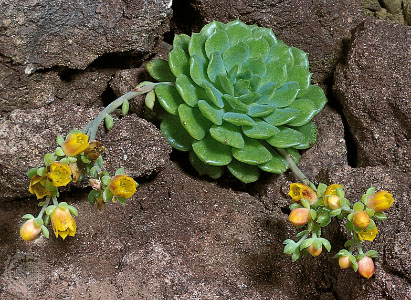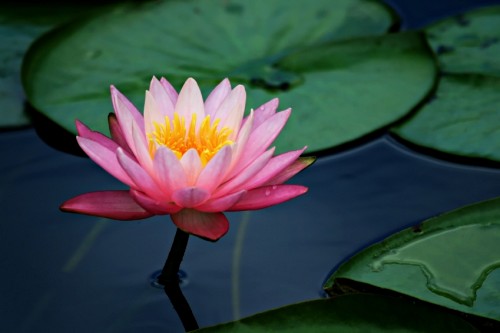A habitat is where a living organism lives or grows.
There are many habitats in the locality.
Some habitats where you can find plants growing are the garden, tree bark, riverbank, water and shaded places (in the shade).
Every plant grows in the habitat that is best for it.
All plants are equipped by nature with things that enables them to survive in their habitat or in the particular environment.
Every plant grows in the habitat that is best for it.
All plants are equipped by nature with things that enables them to survive in their habitat or in the particular environment.
We say that the plants are adapted to their environment.
Some plants are adapted to live or grow in dry environments while others are adapted to wet environments.
The adaptation of plants to dry areas or habitats ensures that they get enough water to survive and grow.
The features they develop to overcome water shortage experienced in dry areas are:
• May be covered with a waxy layer to reduce loss of water by transpiration for example the cactus plant
• Have swollen tissues, which store water for example the cactus plant

• Plants may have very small leaves or no leaves at all to avoid loss of water by transpiration.
An example is the acacia tree.
Due to the absence of leaves, the stem has chlorophyll to carry out photosynthesis.
Examples of such plants are the cactus plant or euphorbia.
Let’s look at more features plants develop to adapt to habitats.
• The leaves may be reduced to thorns or spines to reduce loss of water by transpiration.
• Some plants do not have leaves at all.
• Many plants may shed their leaves in very dry seasons to save water loss through transpiration.
They grow a fresh set of leaves when the rains come.
(c) The roots
They have long roots that grow deep into the ground to get the ground water that is trapped far deep into the earth.
An example is the blue gum.

In some environments, the plants do not face the problem of water shortages.
Instead, they have the problem of too much water.
To cope with the situation, plants have developed the following structures:
(a) The leaves
• They are broad and flat to help the plants to get rid of too much water by transpiration.
The flatness of the leaves also helps the plant to float on water so as to obtain oxygen and air.
• The leaves have many stomata on the upper side to lose excess water by transpiration.
• The roots have no root hairs since they do not need the root hairs to absorb water, which they can even take in through any part of the plant.
• The roots are few because they are only meant for holding the plants together to avoid being washed away by strong currents.
• In some cases, the roots are fairly long to help the plants intertwine with each other so that the plants are held together to form a continuous mat or a floating raft made of many plants, for example the water hyacinth.
(c) The stem
• The stems are long and flexible to allow them to bend easily without breaking when pushed to and fro by water currents or water waves.
Plants grow and survive in different environments.
Some plants grow well in dry areas while others grow well in wet areas.
The features and characteristics that make a plant grow in their natural environment are referred to as adaptations.
Plants are adapted to their natural environment in various ways.
A dry environment is characterized by:
• little rainfall.
• too much sunshine.
• high temperatures.
Examples of dry areas include arid and semi-arid areas.
Plants that grow well in dry regions must have special features that will help them cope with low rainfall and high temperatures.
What are these special features?
Standard 8
1. Which one of the following parts of a cactus plant has been modified to a thorn?
A. Flower B. Stem C. Bud D. Leaf